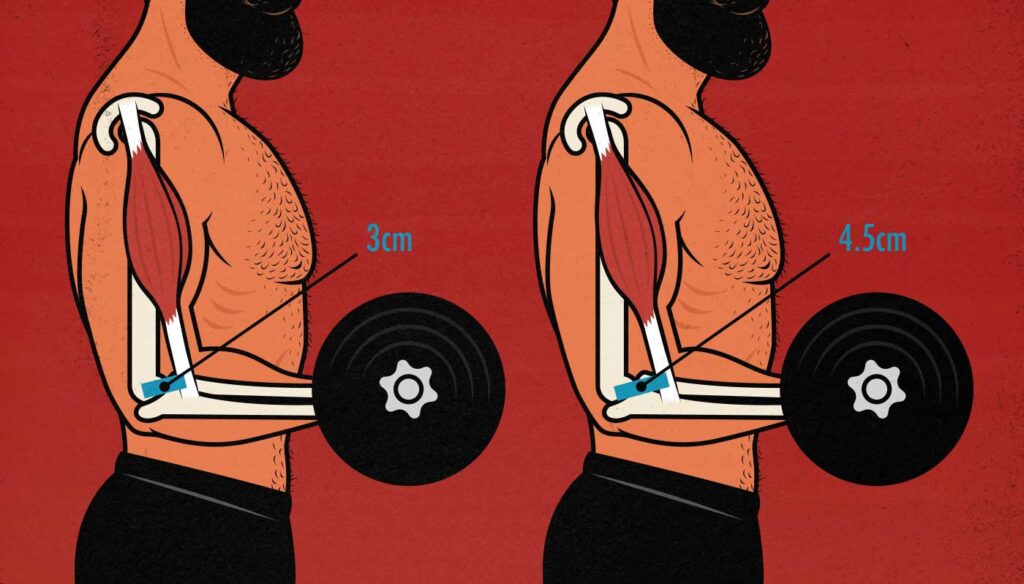
Muscle Size vs Strength: Is Gaining Muscle Mass Good for Gaining Strength?
Many people start weight training because they want to improve their appearance. They focus on building bigger muscles. Hypertrophy training. Bodybuilding. And that’s great. Building bigger muscles can make us look bigger, stronger, and healthier.
But how well does that extra muscle size translate to our strength? What if we follow a bodybuilding routine that’s designed purely to build muscle mass? Will that make us strong? Or will it make us big but weak?
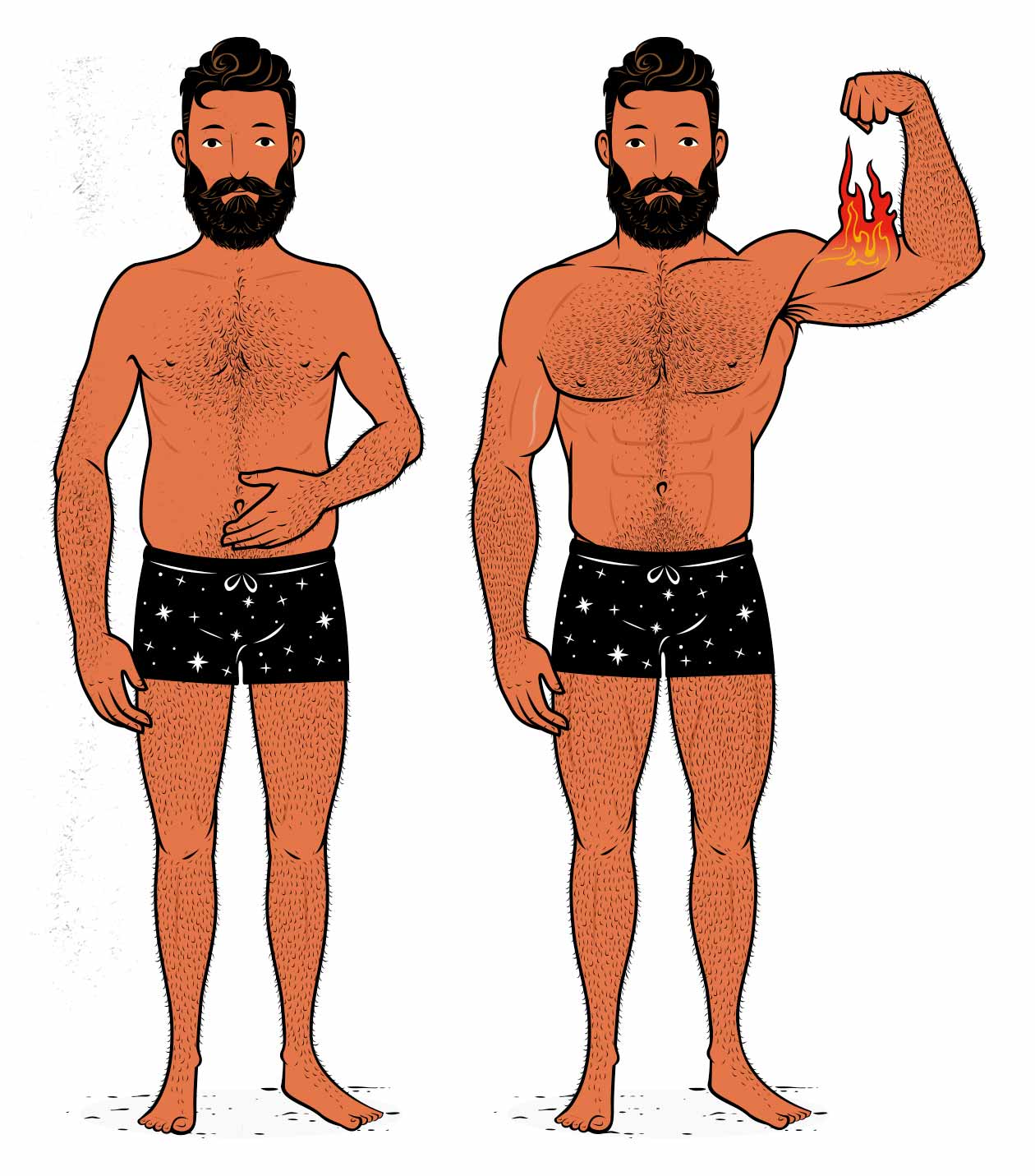
A Bigger Muscle is a Stronger Muscle
The bigger a muscle gets, the more force it can produce. For instance, the bigger your biceps get, the more weight you’ll be able to curl. So, if we look at this image, it’s very simple:
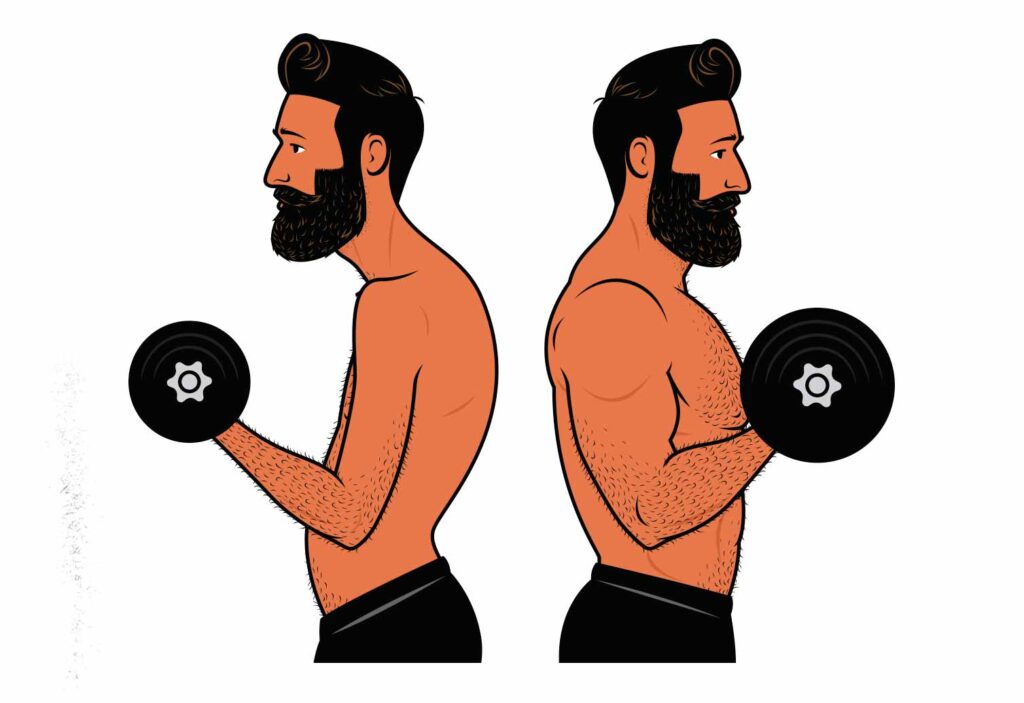
The guy on the right has built bigger biceps. And because his biceps are bigger, they’re stronger. Now that he’s built bigger muscles, he’ll be able to lift more weight. The only thing that’s different is that now his biceps are bigger. And a bigger muscle is a stronger one. So he’s stronger now.
The thing is, this is the same person. When we compare different people, there are a few other factors that come into play. And if we look at lifts that involve more overall muscle mass, such as the deadlift, the situation gets even more nuanced.
Muscle Size Isn’t The Only Thing That Matters
Building bigger muscles is the best way to gain strength because it’s within our control. When we lift weights, eat enough calories, and eat enough protein, our muscles adapt by growing bigger. Building bigger muscles is something we can change. Our genetics influence how easily we build muscle, as well as how much muscle we can ultimately build, but everyone can build muscle.
But building muscle isn’t the only thing that determines how strong someone is. There are several other factors, and most of them come down to genetics.
How Muscle Insertions Affect Strength
One of the most elusive factors that affect your strength is where your muscles insert. These insertions are completely hidden from sight, and even small variations can produce significant differences in how much weight you can lift.
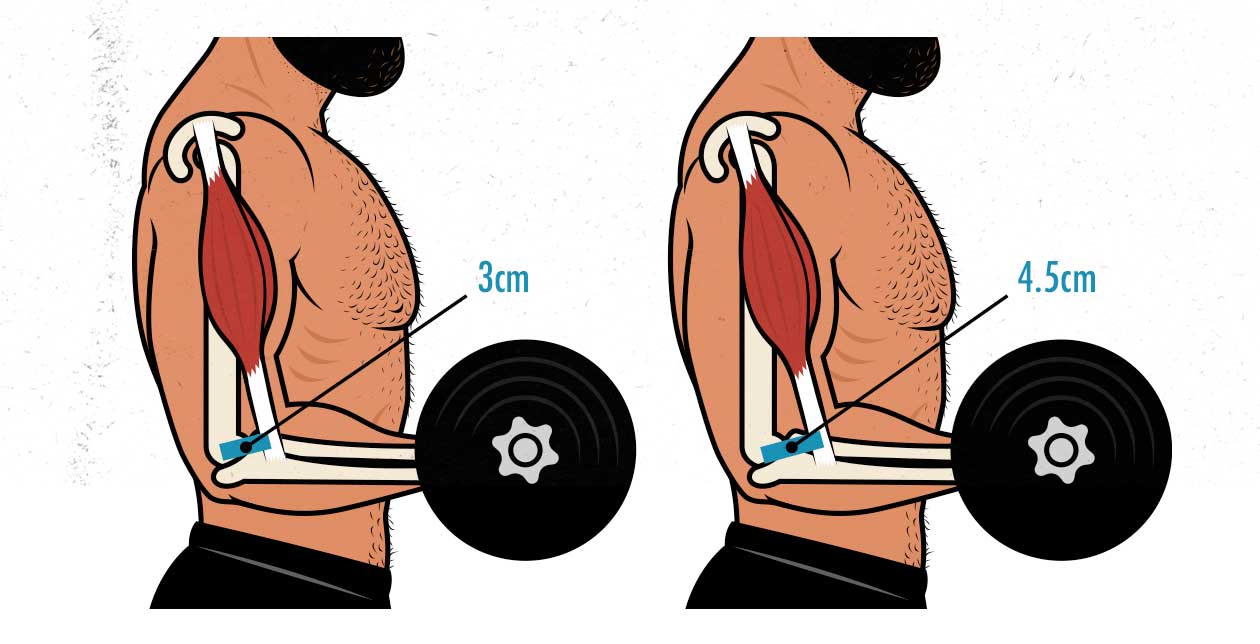
The further away from the joint your tendons insert, the better your leverage is, and the more weight you can lift. In the illustration above, the second guy’s tendons insert 50% further away from the elbow joint. This makes him 50% stronger at biceps curls. This is one reason why some people with smaller muscles can mysteriously lift more weight than people with bigger muscles.
The bad news about muscle insertions is that they’re completely genetic. There’s nothing you can do to change them. You can build bigger muscles, though.
How Height Affects Strength
The longer your limbs are, the longer your moment arms will be, and so the worse your leverage will be. This is why shorter people with stockier limbs are often stronger than taller people, even though their muscles aren’t as big.
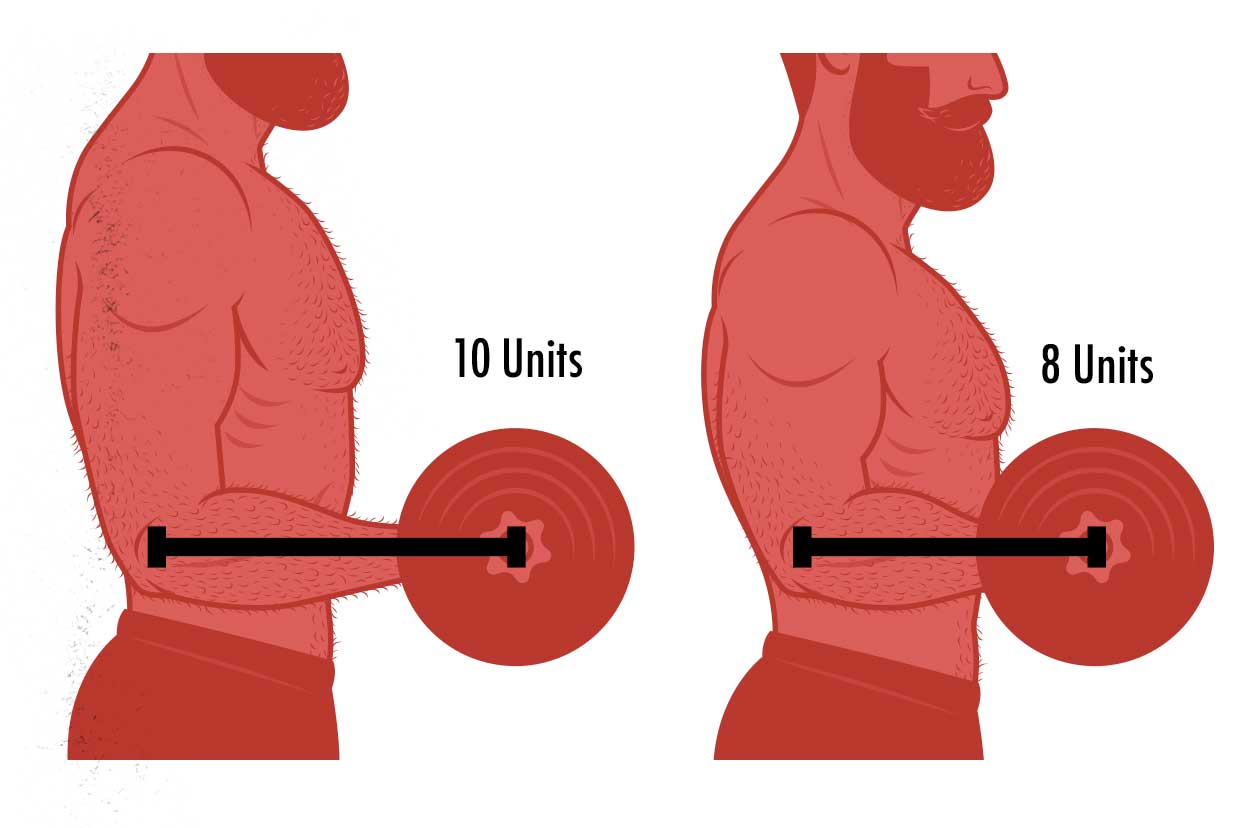
In the illustration above, the second guy’s forearms are 20% shorter, allowing him to lift 20% more weight, even if his muscles are the same size. This is why at powerlifting competitions, shorter guys dominate the lighter weight classes. They can lift more weight per unit of muscle mass.
With that said, taller people are often able to gain more overall muscle mass. It’s possible that the shorter guy may only be able to build 15-inch biceps, whereas the taller guy can build 16-inch biceps. When tall guys reach their genetic muscular potential, they’re often just as strong—sometimes stronger. This is why at strongman competitions, taller guys dominate the heavier weight classes. Their frames can hold more muscle mass.
Our height is genetic, so the best way to become stronger is to fill out your frame with muscle.
How Muscle Fibre Type Affects Strength
The next factor that affects your strength is the composition of your muscle fibres. Some people are born with muscles that are built for endurance. Other people are born with muscles that are built for maximal strength.
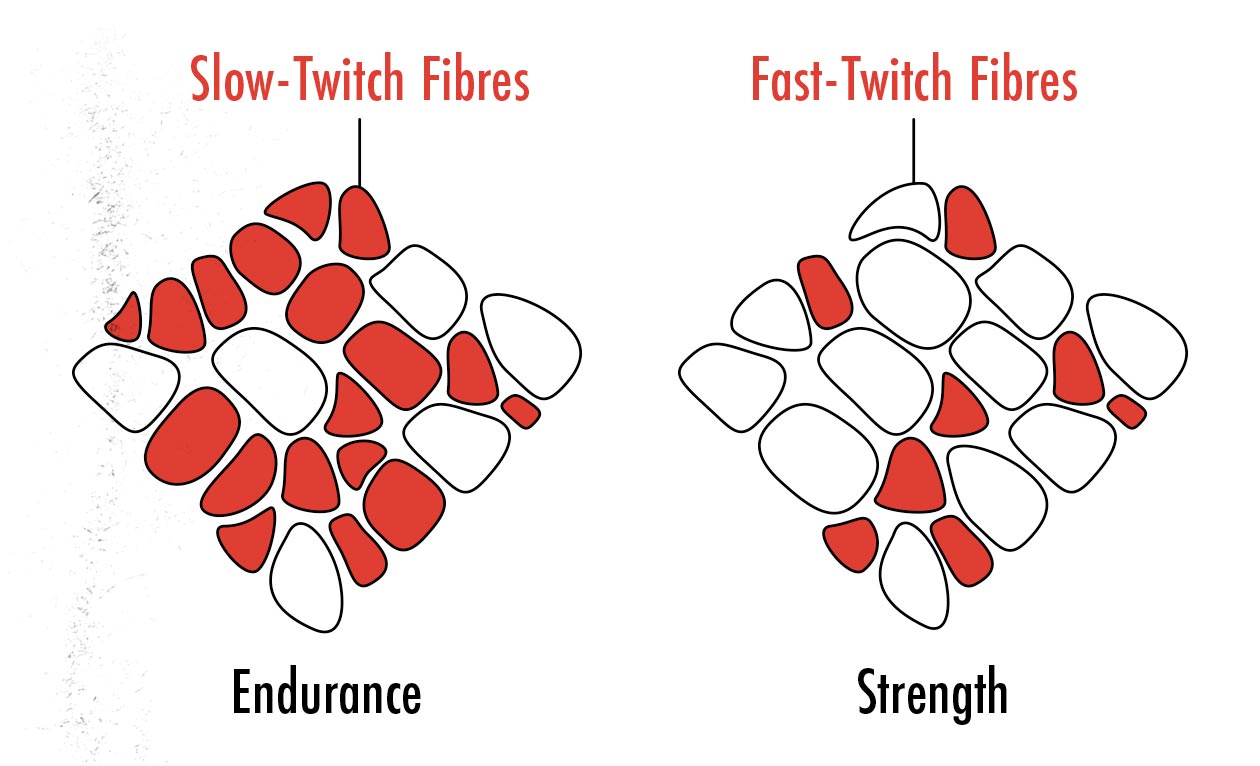
The muscle on the left is made up of mostly slow-twitch fibres (red). These fibres aren’t very strong, but they have great endurance. The muscle on the right is made up of mostly fast-twitch fibres (white). These fibres are strong and explosive, but they have poor endurance.
If you lift weights, some of your muscle fibres can convert into fast-twitch fibres. You can become a person who’s stronger and more explosive. But even so, your muscle fibre distribution is largely determined by your genetics. Even if you lift weights, you’ll have a different proportion of fast-twitch and slow-twitch muscle fibres compared to other people.
The best way to become stronger, then, is to build bigger muscles, making both your fast-twitch and slow-twitch muscle fibres bigger.
How Different Rep Ranges Affect Strength
You can build bigger muscles by doing a wide range of repetitions. Doing 6–20 repetitions per set seems to be ideal for building muscle, but anywhere from 4–40 repetitions will still build muscle fairly well. When it comes to gaining strength, things change.
- If you do 1 rep per set, you won’t stimulate much muscle growth, but you’ll do a great job of teaching your muscles to lift more explosively. You’ll gain more muscle strength than size. You’ll become stronger for your size.
- If you do 10 reps per set, you’ll maximize your rate of muscle growth, gain some strength, and gain some endurance. You won’t have developed as much maximal strength, but your muscles will be bigger and more versatile. You’ll become big and strong.
- If you do 20 reps per set, you’ll maximize your rate of muscle growth, gain quite a lot endurance, and improve your pain tolerance, but you’ll gain even less maximal strength. Your muscles won’t be a strong, but they’ll be better at doing more work. You’ll become big and tough.
Depending on how you define strength, you might argue that all of these rep ranges develop a different kind of strength. Low reps build explosive strength, moderate reps build versatile strength, and high reps build strength endurance. But if we look at the classic definition of strength, the strongest person is the one who can lift the heaviest thing. It’s not about how many times they can lift it or how far they can carry it. It’s true, then, that low reps are best for making people stronger for their size.
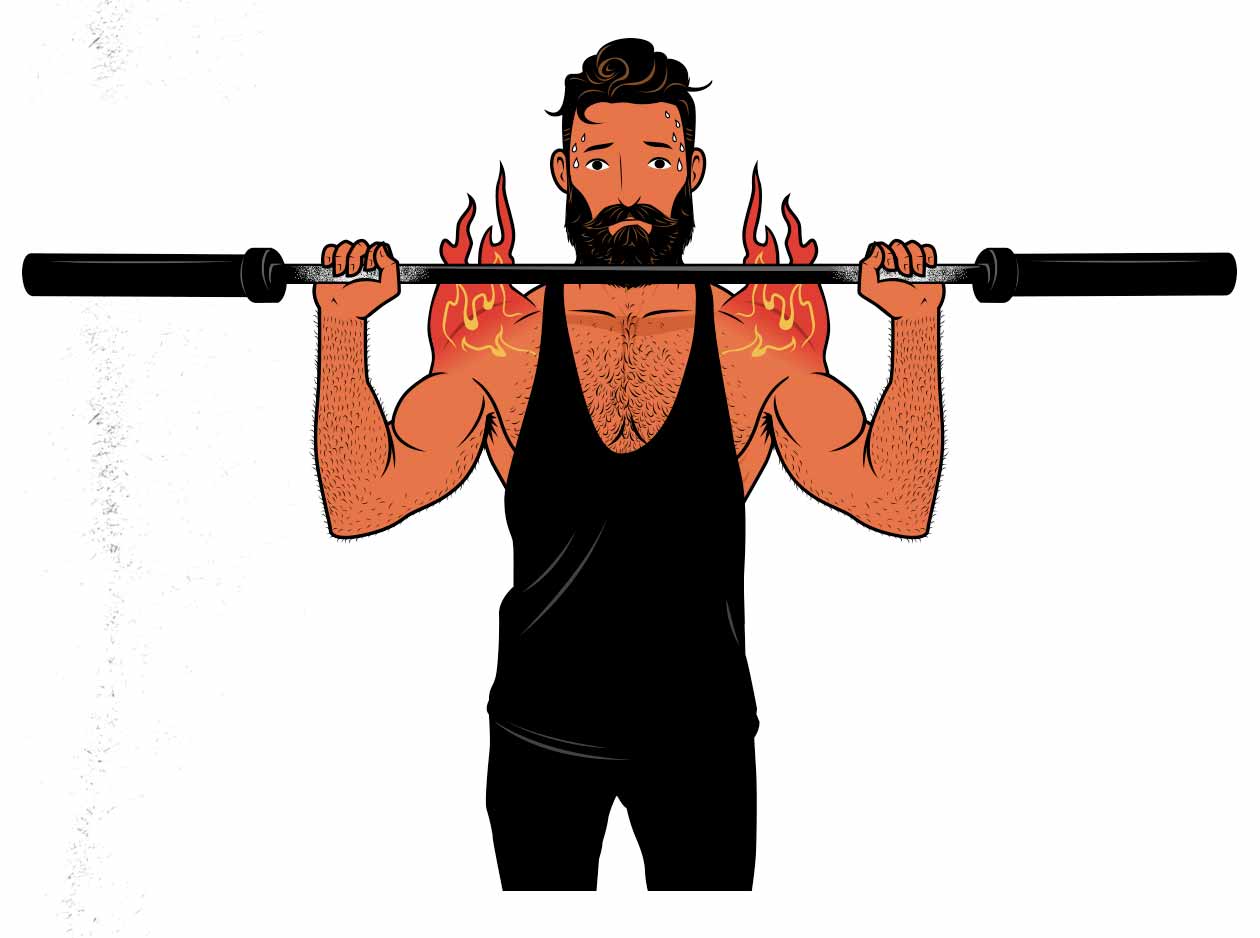
For a real-world example, let’s imagine a powerlifter and a bodybuilder:
- The powerlifter is a little bit smaller, he’s great at lifting heavy weights for a single repetition, and he has less muscular endurance. Perhaps he can bench 335 pounds for a single repetition and 225 pounds for 12 repetitions.
- The bodybuilder is a little bit bigger, he’s great at lifting weights for several repetitions, and his 1-repetition maximum (1RM) isn’t quite as high. Maybe he can bench 315 for a single repetition and 225 pounds for 15 repetitions.
Strictly speaking, the powerlifter is stronger. But to most people, they’re both similarly strong, just in slightly different ways.
The main thing to keep in mind, though, is that because a bigger muscle is a stronger muscle, both of these guys need to reach their genetic muscular potential to reach their genetic strength potential. Both of these guys are muscular. It’s just that the powerlifter focuses on pure strength whereas the bodybuilder builds in work capacity.
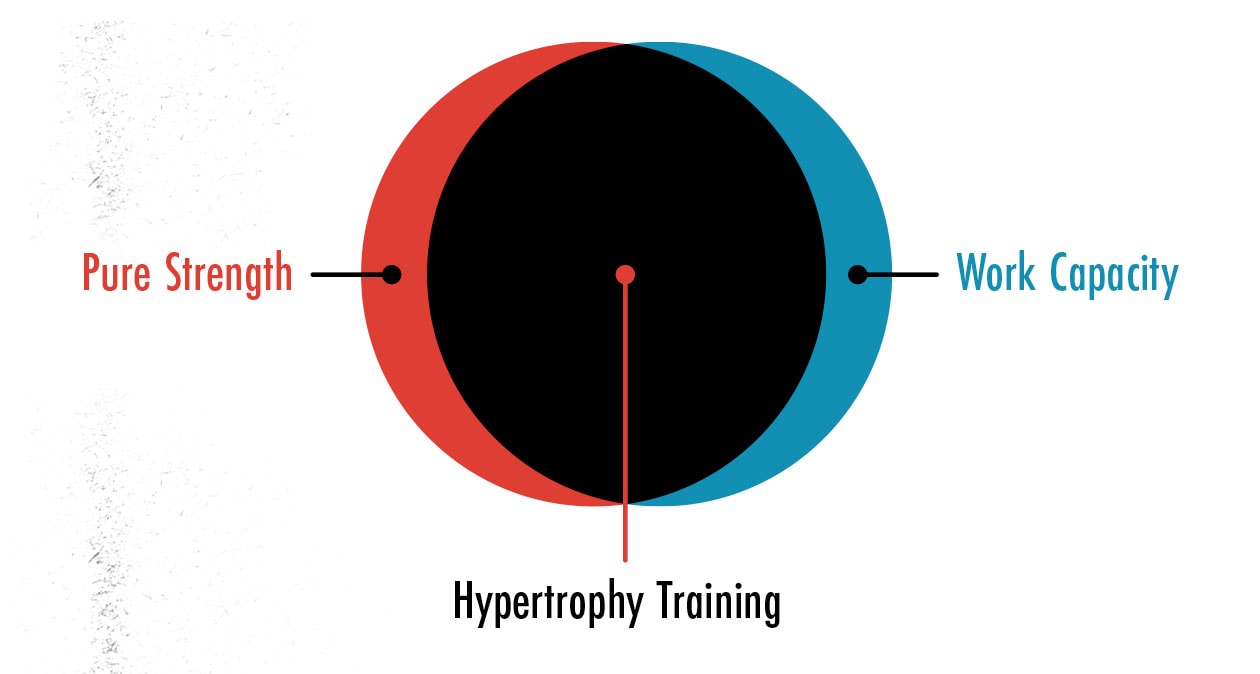
And because lifting in moderate rep ranges is the most efficient way to build muscle, most powerlifters will go through phases of lifting in moderate rep ranges to gain more muscle more easily. That’s why hypertrophy training—training for muscle size—is so useful for both powerlifters and bodybuilders.
How Different Muscle Proportions Affect Strength
Okay, so we’ve covered a few different reasons a skinnier guy might be stronger than a more muscular guy. All of these reasons are true, and at the highest levels of powerlifting and bodybuilding, they can make all the difference. But the main reason that some skinny guys are stronger than some muscular guys is that they do a better job of building balanced muscle proportions.
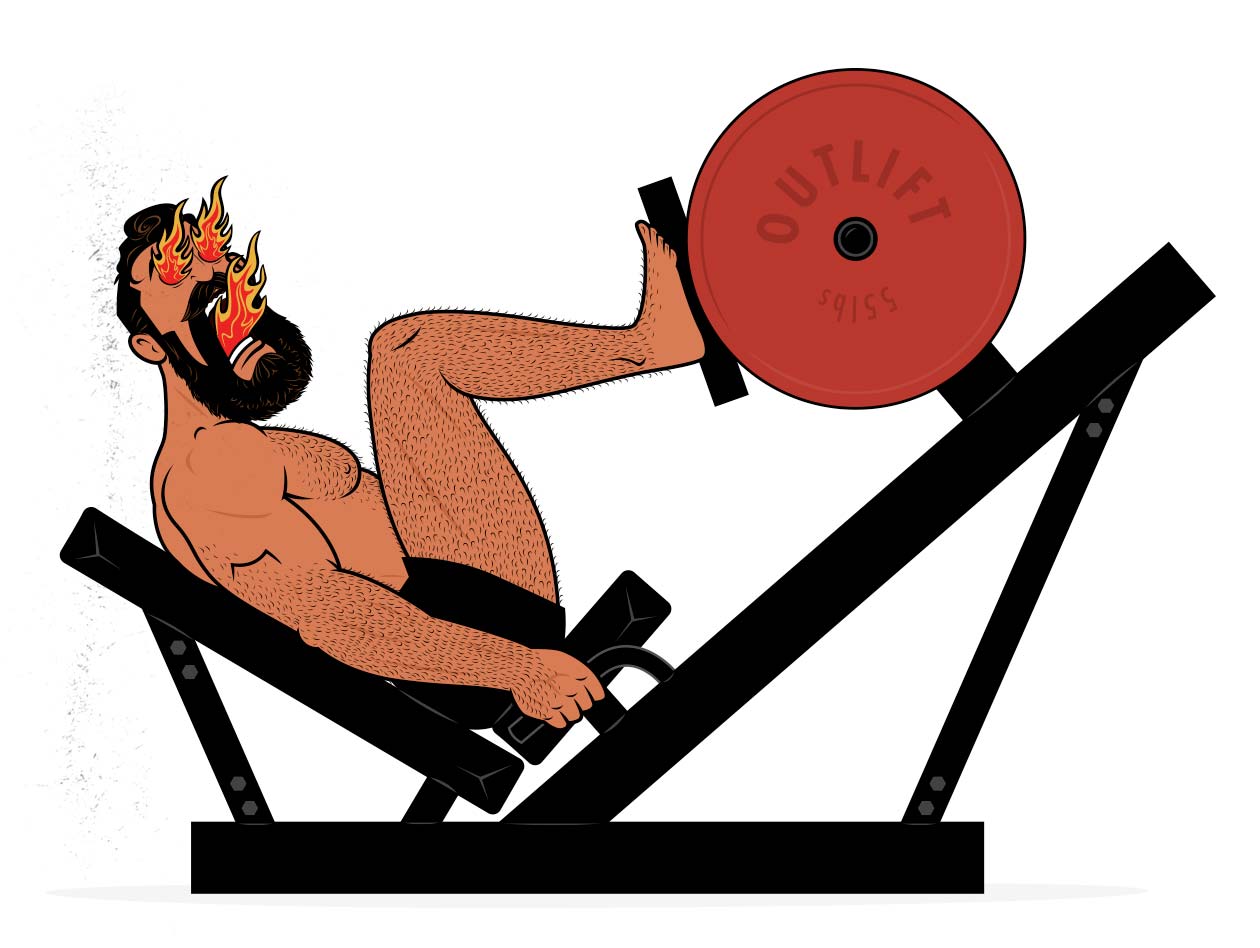
Let’s imagine a bodybuilder who builds a big back by doing lat pulldowns, big legs from doing the leg press, and a big butt from doing hip thrusts. He might look very similar to a powerlifter who builds a big back by doing barbell rows, a big butt from doing good mornings, and big legs from doing squats. But when they compare deadlift strength, the powerlifter is 3x as strong. What’s going on here?
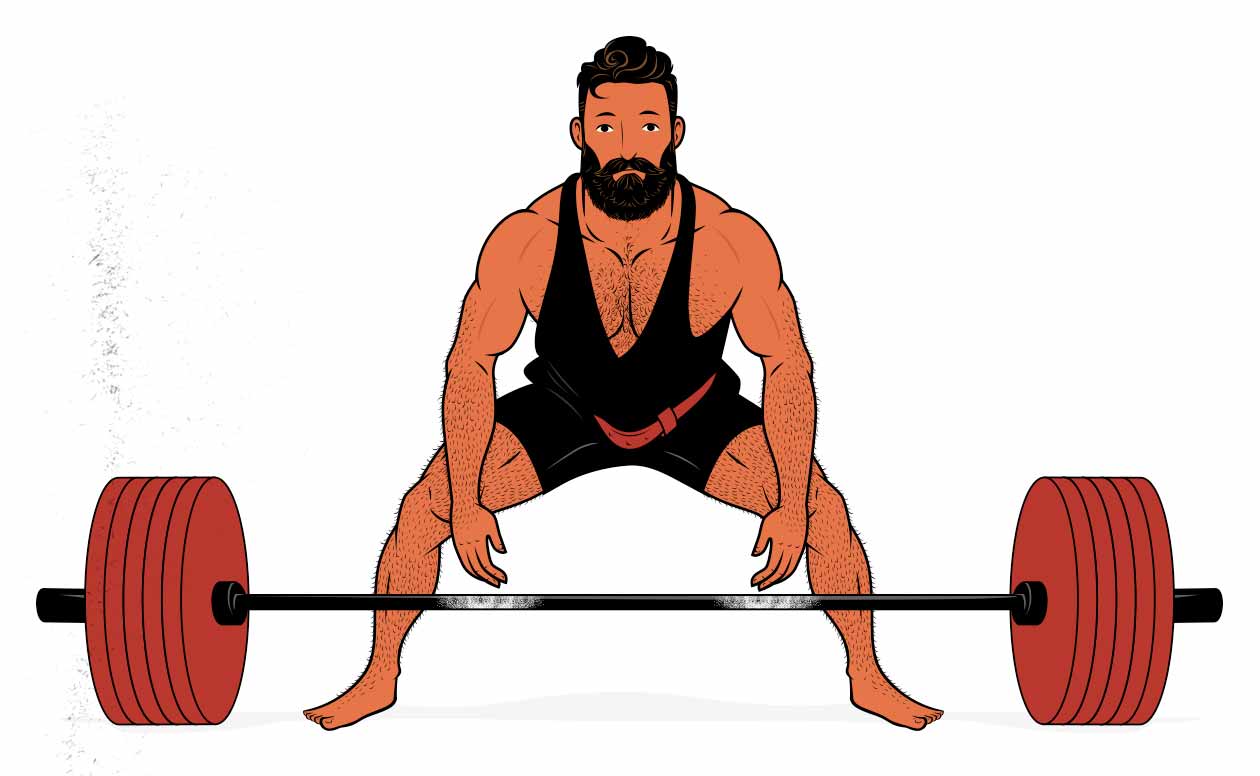
Well, for one, the powerlifter has been bulking up his spinal erectors! Barbell rows, good mornings, and squats train the spinal erectors. Lat pulldowns, leg presses, and hip thrusts don’t. As a result, the powerlifter has the spinal strength to pick up a heavy barbell, and the bodybuilder doesn’t.
So even though a bigger muscle is a stronger one, if you want to lift heavy weights, you need to bulk up the muscles that will allow you to lift those heavier weights. If you spend most of your time doing the big barbell lifts (or dumbbell lifts), you’ll gain general strength without needing to think about it too much. If you use exercise machines, resistance bands, or your own body weight, though, it’s easier for some muscles to fall behind. (For instance, most bodyweight exercises don’t train the spinal erectors.)
The good news is that the big compound barbell and dumbbell lifts are ideal for gaining both muscle size and strength. For instance, squats and deadlifts stimulate more overall muscle growth than any other lift, and they also transfer perfectly to your general strength. The same is true with lifts like the bench press, chin-up, and overhead press.
Summary
There are a few different genetic factors that affect how strong we are, such as how favourable your muscle insertions are, how tall you are, how long your limbs are, and what proportion of fast-twitch and slow-twitch muscle fibres you have. Since these factors are genetic, though, the best way to get stronger is simply to build bigger muscles. That will allow you to get the most strength out of your genetics.
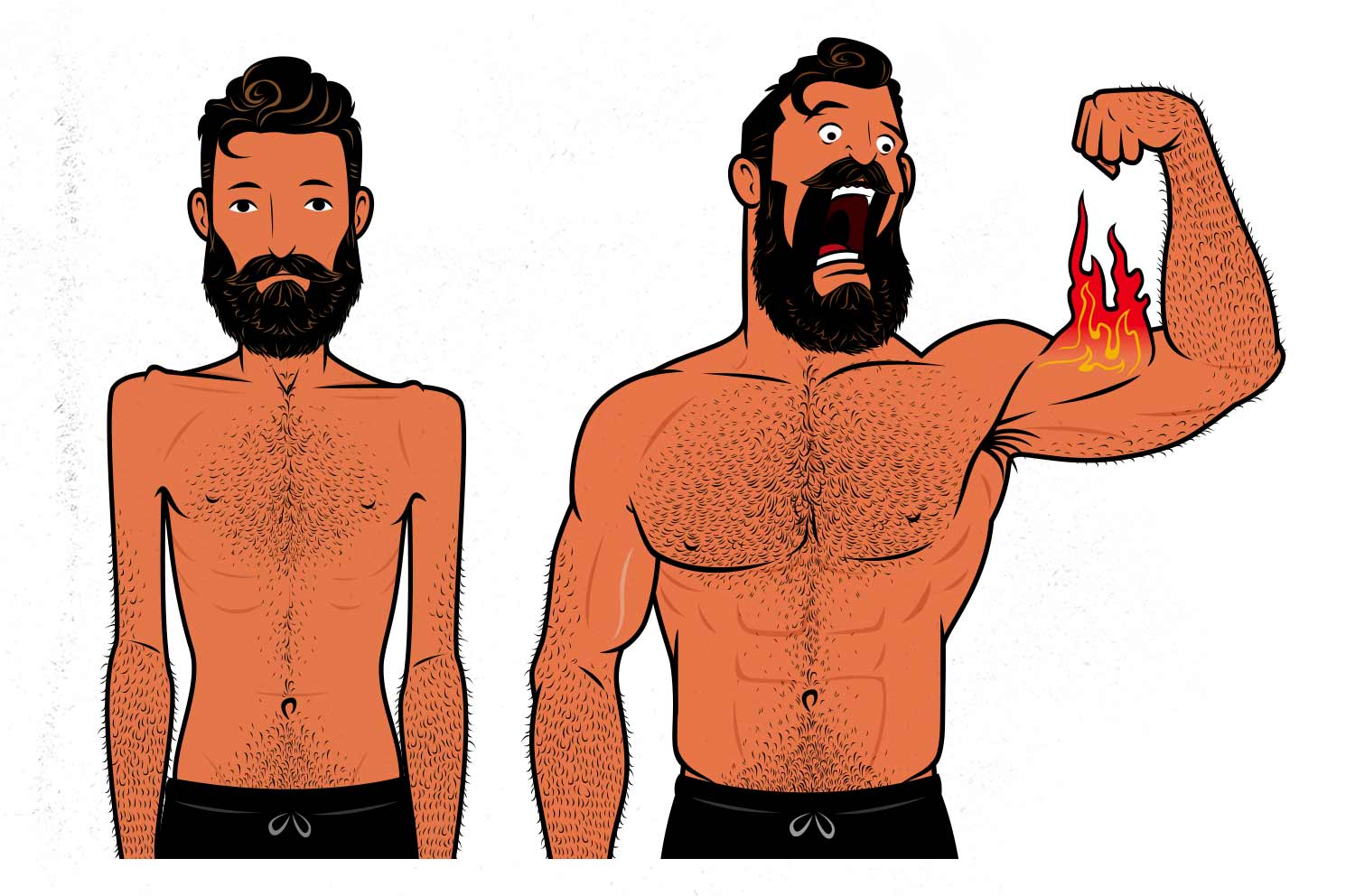
How you train can also influence how strong you are. Training heavier makes you better at lifting heavier weights, whereas taking lighter sets to failure gives you greater muscular endurance. Similarly, doing big compound lifts (such as the deadlift) will bulk up the muscles you need to do big compound lifts (such as the deadlift). If you build muscle by doing smaller lifts, you might not develop the stabilizer muscle strength you need to do the bigger compound lifts.
So again, if you want to be strong overall, you need to build big muscles. If you want to get good at lifting heavy weights for a single repetition, you need to practice lifting heavy weights for a single repetition. And if you want to do lifts that require strength in your stabilizer muscles, then you need to bulk up those stabilizer muscles. The best way to become stronger is to:
- Build your workout routine around the big compound lifts:
- Focus on building bigger muscles.
- Once you have big muscles, practice lifting in lower rep ranges.

If you want a customizable workout program (and full guide) that’s ideal for gaining both muscle size and strength, check out our Outlift Intermediate Hypertrophy Program. Or, if you’re still skinny or skinny-fat, try our Bony to Beastly (men’s) program or Bony to Bombshell (women’s) program. If you liked this article, you’ll love our full programs.



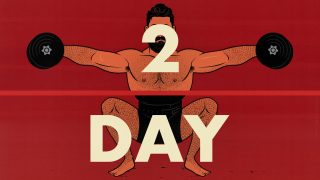

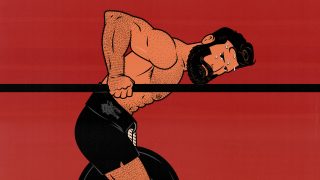
Hi Shane! I just want to ask what are your thoughts on this
3 times a week of weighted pushups, pull-ups, lateral raises and 1 core exercise. 4 sets of 6-8 reps for all except for the core exercise.
As you can see, I did not add any leg work, I stopped doing any leg work recently because my legs are growing much faster than my upper body, to the point that my lower body is much bigger than the upper. I am a man, by the way. For aesthetics, should I still incorporate leg work? I don’t want my legs to get bigger anymore, and probably want to lose a bit of size.
Another question is, should I change it to twice a week or stick to thrice a week full-body workouts?
Hey Reymart,
There’s nothing that says you HAVE to train legs. I certainly understand why you wouldn’t want to bulk them up if they’re already too big. With that said, training your legs is great for general strength, bone density, health, and overall body composition. Totally your call.
Training 2–3 times per week is ideal. As for whether you should train twice or three times, that’ll come down to individual differences. If you feel ready to lift after a day of rest, I’d go for it. If you still feel beat up, switch to training just twice per week. So how it affects your strength gains in that 6–8 rep range.
If it were me, and if I had a lagging upper body, I’d also be doing 2–3 sets of biceps curls and triceps extensions. I’d probably also do some bent-over barbell rows to get your spinal erectors, especially since you aren’t deadlifting. But again, totally your call.
Hi Reymart,
If I were in your situation, I would rather train the legs with much lower frequency (like once in 7-10 days), with much lower volume (like 5-6 reps per exercise, not sets per exercise), but with very high loading (at or above 90% 1RM or RRE 9).
It would allow me to retain the strength in legs without causing further hypertrophy and would also allow to keep the body used to basic movement patterns in lower body like squat, hinge, etc.
I am such a fan of this site! Thank you so much for all the fantastic information! In curious, in light of the relationship between strength and hypertrophy, if it would make sense to lift in both rep ranges if I care about raw strength — eg I do two squat workouts a week and do one squat workout 3×10 and one 5×5. I started out doing only 3×10 but switched when I discovered that my one rep max was very close to my max for 10 reps, and I’d like to build bigger muscles that are also stronger in the lower range. I’d be curious to hear your thoughts!
My first day here and in search of.
Background: I am a 70+year old male Marine who has stopped several years ago do to several accidents. I was 6-1 and am 5,11. Muscle mass has dissipated and taken strength with it. My primary concern is shoulder strength. I need to create muscle strength if for no other reason than to handle the necessities of my hobbies.
What about push-ups? They’re amazing for general strength, they’re great for shoulder strength, and they also work your serratus muscles, which is great for the health of your shoulder joints. If you do a few sets of push-ups every couple of days, that should take care of your shoulders. If push-ups from the floor are too difficult, you can put your hands on a bench. If push-ups from the floor become too easy, you can raise your feet up.
I’m not sure if that helps, but I hope it does.
Hi
This site is so informative! Thanks for all the effort in writing the articles. Im running a linear progression 3×5 Tues and Thurs squat, bench, deadlift and Thursday squat, press, deadlift. Sundays it’s hypertrophy. Same exercises with added chin ups. Adding reps each session. The rest of my time is spent on Grappling.
Is this a good enough program for a 40 novice in good athletic shape?
Hey Jame, thank you!
I’m not quite understanding your workout program. Can you put it in a format like this:
Monday:
Tuesday:
Wednesday:
Thursday:
Friday:
Saturday:
Sunday:
That way I can take a better look and give you some feedback.
Hey Shane, i appreciate your reply. I wrote this in a rush so i’ll be much clearer this time.
I’m 40 years old 5ft 8 and 175lbs. I’m in decent athletic shape. I grapple 3 / 4 sessions per week approx 8 hours. I’m supplementing this with strength work – i have a rogue setup of a rack, barbell and weights at home. My aim is to build strength and muscle. I have a on-off history with strength training but after a hiatus i consider myself a novice.
I’m trying to decide on what program to do. I have been doing starting strength Liner progression for the last 8 weeks but feel that i need to do hypertrophy work. currently this is my routine
Mon- grappling
Tues- Starting strength
Wee- grappling
Thurs starting strength
Friday Off
Sat Grappling
Sun starting strength
I’m thinking of either swapping the Sunday for hypertrophy session and keeping the rest of the week as is or totally switching from starting strength with a hypertrophy plan for the next 6- 12 months. Using the same days as grappling is my primary focus. However i would like to gain 5-10 pounds lean muscle. With what I have taken from reading your site was looking at the following. Any advice or pointers would be appreciated. Thanks you
LP – adding weight each session
Workout A
Squats – 3 sets of 6-12reps.
2. Bench Press – 3 sets of 6-12 reps.
Barbell Rows- 3 sets of 6-12 reps..
Workout B
1. Deadlifts
3 sets of 6-12 reps.
2 minutes rest between sets.
2. Pull-Ups 3 sets of 6-12 reps..
2 minutes rest between sets.
3. Overhead Shoulder Press
Aha! Now I see what you mean. Sorry for missing it before.
I’ve got a hypertrophy training version of Starting Strength in this article. I think that might be what you’re looking for.
Linear progression works until it doesn’t. I find it works better to do as much as you can, see what you get, stimulate growth, and try to outlift yourself next time. Sometimes that means advancing faster than Starting Strength would recommend. Other times, it means advancing slower. We have our own system for that in our Outlift Intermediate Bulking Program.
With that said, if linear progression is working, it’s working, so you don’t need to worry 🙂
I think your routine looks good, by the way. You could stick with the workouts as you’ve planned them. It will work 🙂
Sounds like you’ve got a great active lifestyle, too.